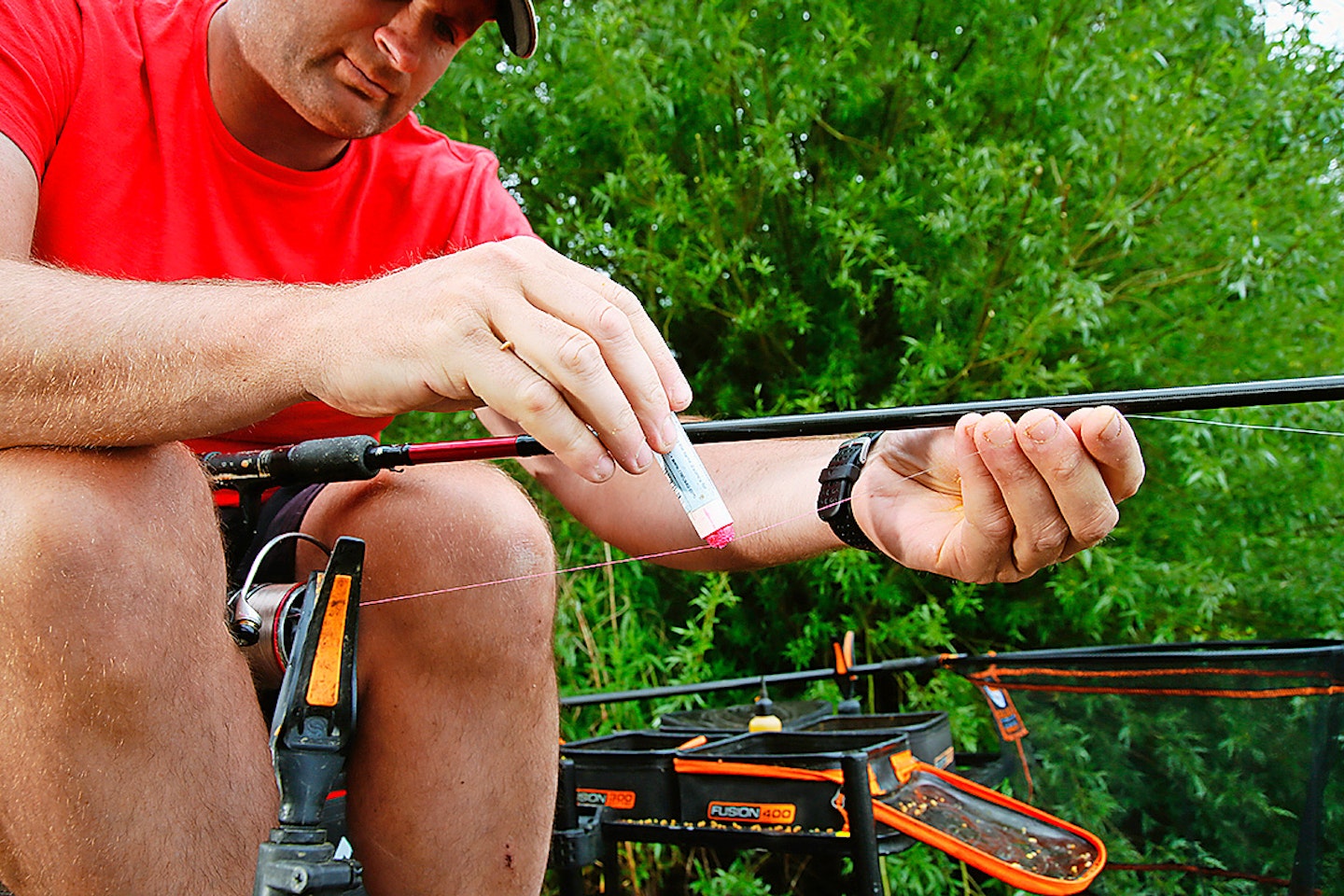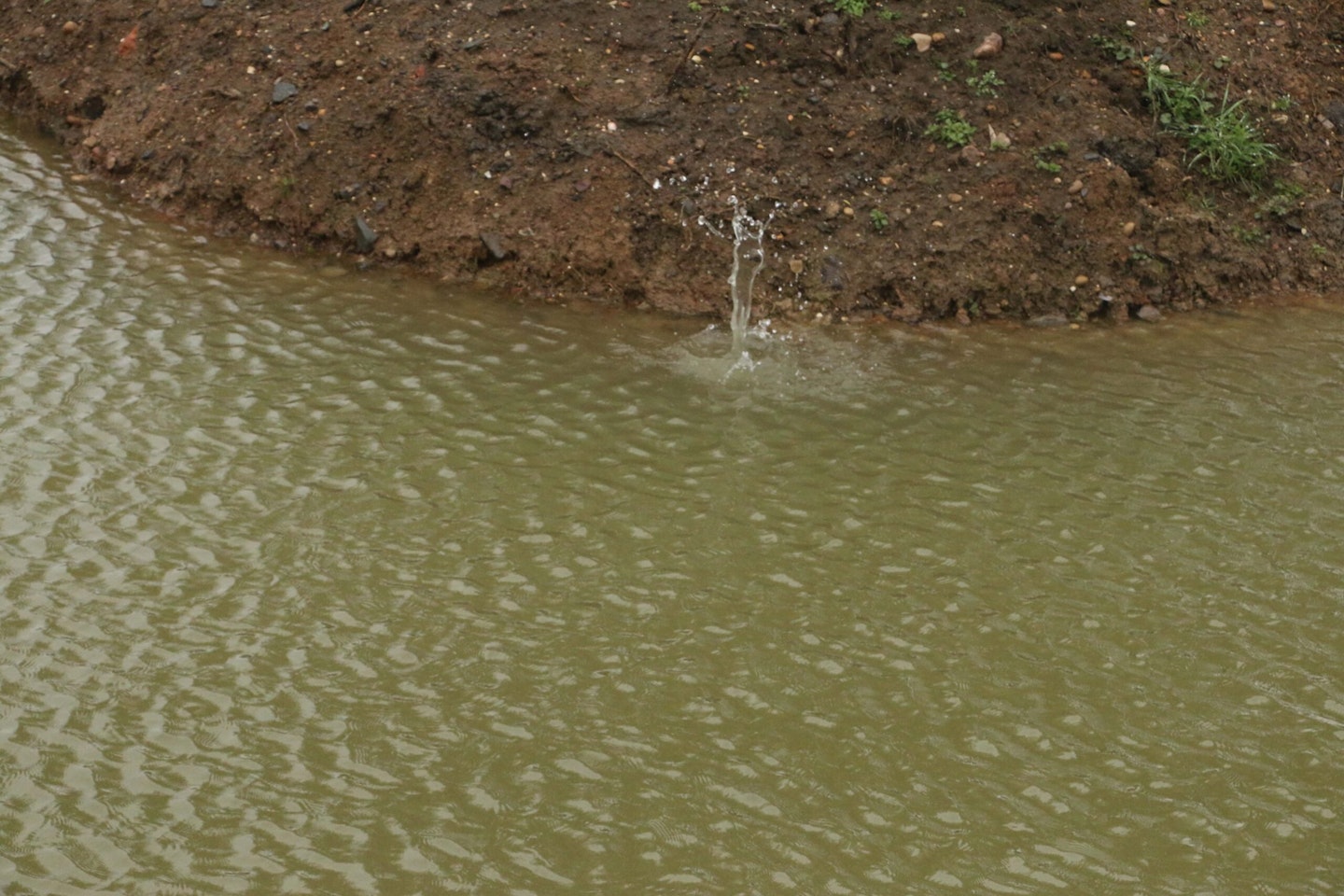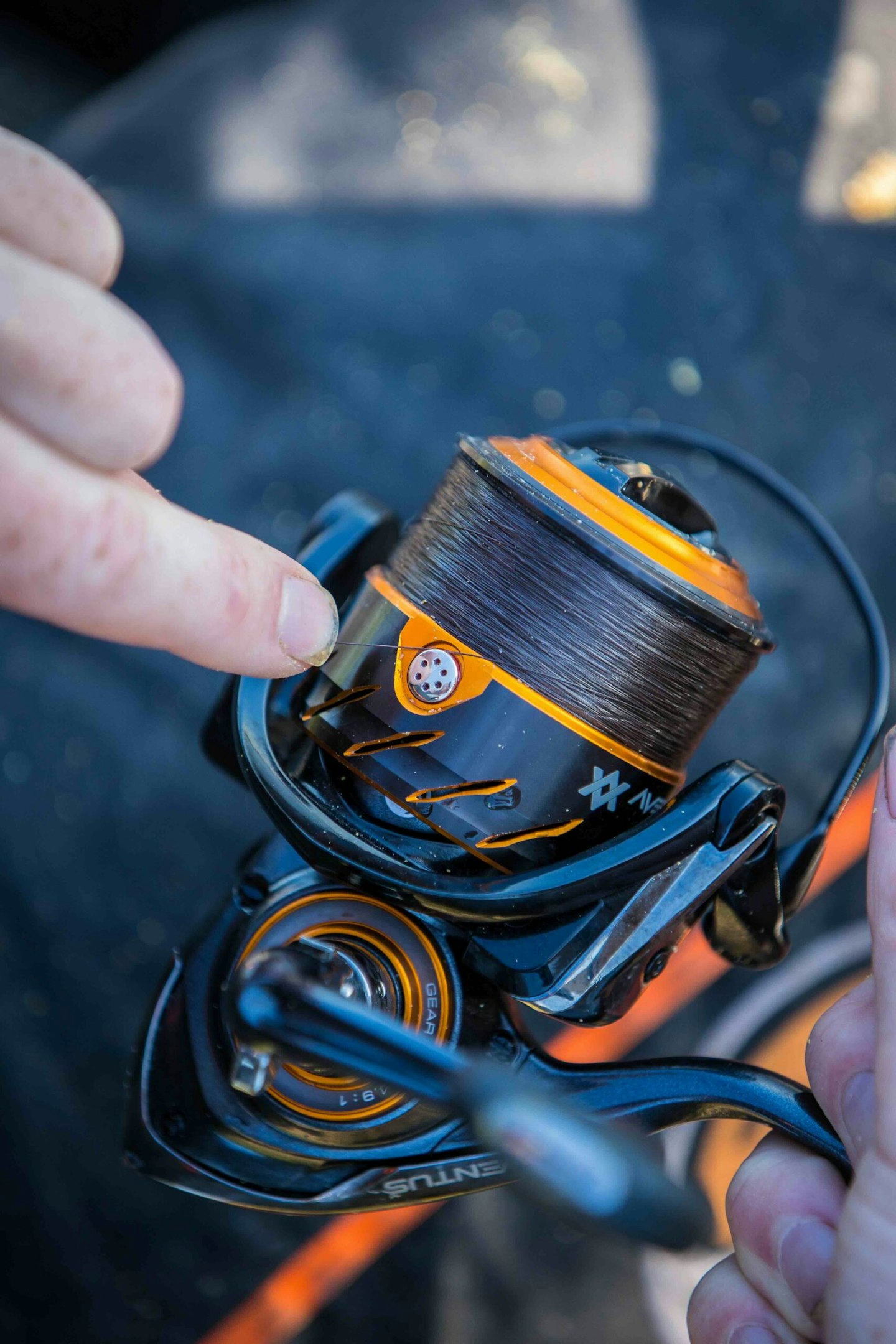Firstly, why clip up? Well, feeder fishing is all about accuracy and ensuring that you’re casting to the same spot every time to build the swim. Without a clip this is nigh-on impossible, and you then end up spreading bait all over the place, which will definitely mean you catch a lot less!
Equally, if casting to an island, it’s impossible to land a feeder two inches off the bank every time without the use of a line clip. You may be able to do it once or twice, but not every single cast.
In open water, it’s different, and that all-important accuracy is achieved by both clipping up and then picking a marker to aim at on the far bank. This ensures you can hit the same spot each time.
THE BEST FEEDER FISHING REELS ALL HAVE LINE-FRIENDLY CLIPS TO KEEP YOUR LINE DAMAGE FREE.

Long or short
So, you’ve clipped up to your spot – what do you do if you hook a big fish? Well, if I am open-water carp fishing , I won’t stay clipped up if I’m fishing inside 25m unless it’s to an island. If you hook a fish next to an island it can only go left or right, or back towards you – it can’t climb out and go over the island! So, this buys you time, should you need to remove the clip.
Fishing up to 25 metres in open water is different, and if accuracy is essential then I will use a line clip and a line marker pen. What I do is clip up to the spot, and then mark the line behind the clip with a marker pen, usually in a bright orange or pink. I then cast out to the required spot, take the clip off and wait for the bite.
When I get the bite I can then safely backwind without the clip. Once I land the fish it takes just one ‘false cast’ away from my intended zone to clip up again using the marked section of line as the guide. Of course if I get no bites, then I simply clip back up before reeling in.
To make it easy to spot the orange or pink coloured section, I like to paint around 20cm of line. It’s important when doing this to let it dry before winding it back onto the reel. If you don’t it can rub off quicker, plus other areas of the line can get paint on which makes spotting the right mark trickier than it needs to be. I will add here that I would expect to have to repaint the line several times in five hours as it will wear off, especially when constantly moving in and out the rod rings.
THE BEST FEEDER FISHING RODS WILL HELP IMPROVE YOUR ACCURACY WHEN FISHING.

Insurance policy
For any open-water work over 25m I’m happy to clip up permanently. When fishing such areas I like to stop the rod behind me on the cast as the feeder hits the clip. This not only helps cushion the feeder into the water but it also means I get some line back on the reel when I tighten up.
This is a little insurance policy should I hook a big fish that’s running hard. By that I mean that when I pick up on the fish I’m not already tight on the clip – instead I have two to four turns to play with before I hit the clip. This gives me that extra second or two to decide if I need to remove the clip and, if I do, it buys me the time to do so.
A little tip when fishing clipped-up for big fish is always make sure the line clip is facing towards you. That way you don’t have to search for it if the moment arises and you need to unclip for that match-winning fish.
THE BEST SHORT FEEDER RODS ARE SUPERB FOR CASTING UPTO ISLANDS OR CLOSE RANGE WORK.

Stay vigilant
When fishing clipped up you need to watch your quivertip at all times. This might seem obvious but the point I’m making is that fishing clipped up is about reacting quickly to a bite. So, when that tip goes round I can pick up quickly and react if I need to.
The worst thing that can happen when fishing clipped up is to not be watching and nearly lose your rod! The issue then is the fish already has momentum and will be moving fast, so getting the clip off becomes that little bit more difficult. It’s therefore vital that you gain the upper hand by picking up on the bite at the right time.
THE BEST FISHING SEATBOXES PROVIDE A STABLE PLATFORM TO COMFORTABLY FISH FROM!

